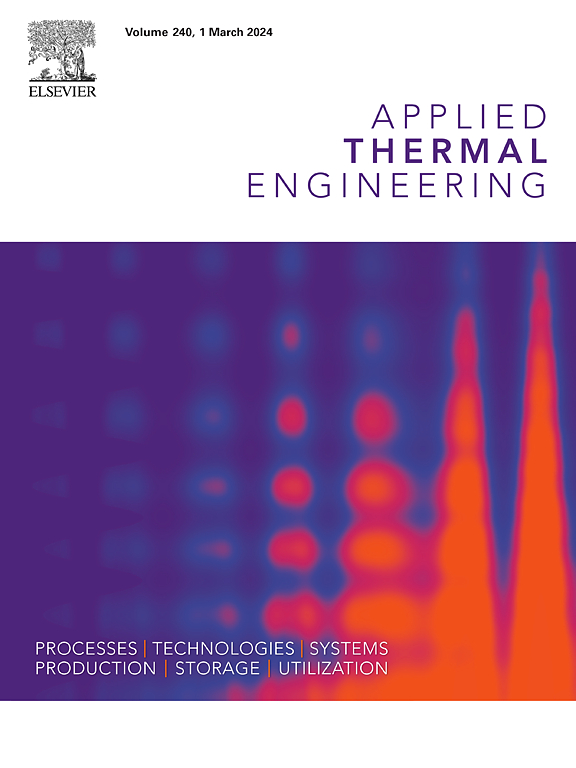Preliminary Implementation of High-Resolution Multi-Scale coupling calculations for the entire pressure vessel based on OpenFOAM
IF 6.1
2区 工程技术
Q2 ENERGY & FUELS
引用次数: 0
Abstract
Significant coupling effects exist among system components in nuclear pressure vessel. Due to the complex geometric structures, the nuclear industry primarily relies on system codes or sub-channel methods for core safety analysis. However, these methods suffer from low model accuracy and insufficient coupling capabilities. Additionally, the differences in model scales impede direct coupling analysis with the CFD calculations of the plenum system. To address these issues, this paper proposes a multi −scale coupling calculation method for the entire pressure vessel: For the plenum system, detailed CFD modeling is employed, while the core calculations are conducted using CorTAF, a high-resolution core Multiphysics-coupling analysis method developed by our team. A cross-resolution coupling model is utilized to integrate the two, achieving cross-resolution coupling simulations for the entire pressure vessel, encompassing both the plenum and core system. The above method was applied to the coupling calculations of a typical pressurized water reactor’s lower plenum and core, revealing detailed thermal–hydraulic phenomena under precise core flow inlet distribution conditions. The lateral flow at the core inlet exceeds 1 m/s, with the maximum and minimum fluid velocities in the subchannels deviating by up to 70 % from the average velocity of 2.42 m/s. The flow distribution only begins to stabilize after a height of 1.2 m in the core. The paper also includes inlet asymmetric flow reduction calculations. Overall, the method enables multi-scale and multi-physics coupling calculations, which provide significant reference value for improving the accuracy of current core safety analyses.
基于 OpenFOAM 的整个压力容器的高分辨率多尺度耦合计算的初步实现
核压力容器中的系统部件之间存在显著的耦合效应。由于几何结构复杂,核工业主要依靠系统代码或子通道方法进行堆芯安全分析。然而,这些方法存在模型精度低和耦合能力不足的问题。此外,模型尺度的差异也阻碍了与全封闭系统 CFD 计算的直接耦合分析。为了解决这些问题,本文提出了一种针对整个压力容器的多尺度耦合计算方法:对于全风道系统,采用详细的 CFD 建模,而核心计算则采用我们团队开发的高分辨率核心多物理场耦合分析方法 CorTAF。利用跨分辨率耦合模型将二者整合在一起,实现了整个压力容器的跨分辨率耦合模拟,其中包括腔体和核心系统。上述方法被应用于一个典型的压水堆下部柱体和堆芯的耦合计算,揭示了在精确的堆芯流入口分布条件下的详细热流体力学现象。堆芯入口处的横向流速超过 1 米/秒,子通道中的最大和最小流速与 2.42 米/秒的平均流速相差达 70%。只有在岩心高度达到 1.2 米后,流体分布才开始趋于稳定。论文还包括入口不对称流量减少计算。总体而言,该方法实现了多尺度和多物理耦合计算,为提高当前岩心安全分析的准确性提供了重要参考价值。
本文章由计算机程序翻译,如有差异,请以英文原文为准。
求助全文
约1分钟内获得全文
求助全文
来源期刊

Applied Thermal Engineering
工程技术-工程:机械
CiteScore
11.30
自引率
15.60%
发文量
1474
审稿时长
57 days
期刊介绍:
Applied Thermal Engineering disseminates novel research related to the design, development and demonstration of components, devices, equipment, technologies and systems involving thermal processes for the production, storage, utilization and conservation of energy, with a focus on engineering application.
The journal publishes high-quality and high-impact Original Research Articles, Review Articles, Short Communications and Letters to the Editor on cutting-edge innovations in research, and recent advances or issues of interest to the thermal engineering community.
 求助内容:
求助内容: 应助结果提醒方式:
应助结果提醒方式:


